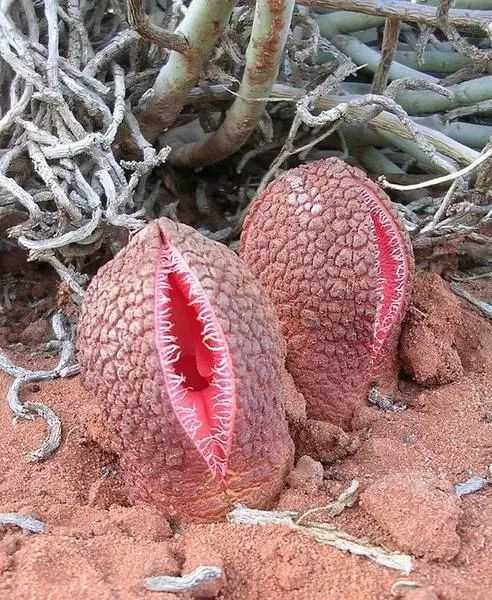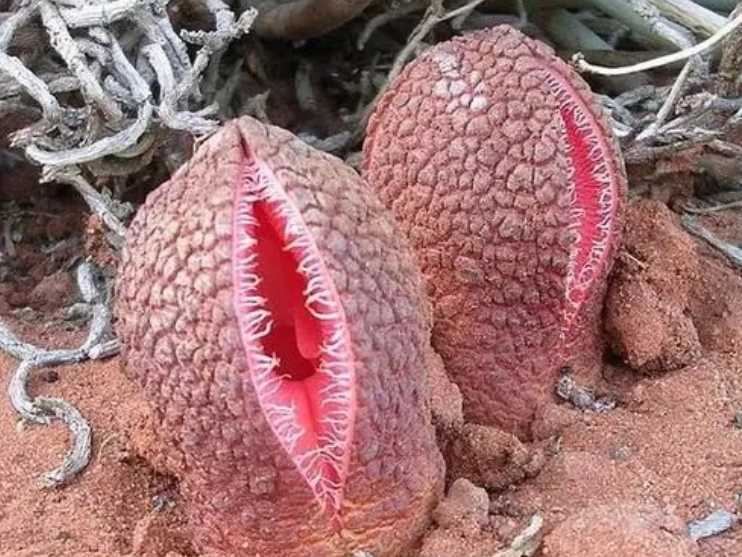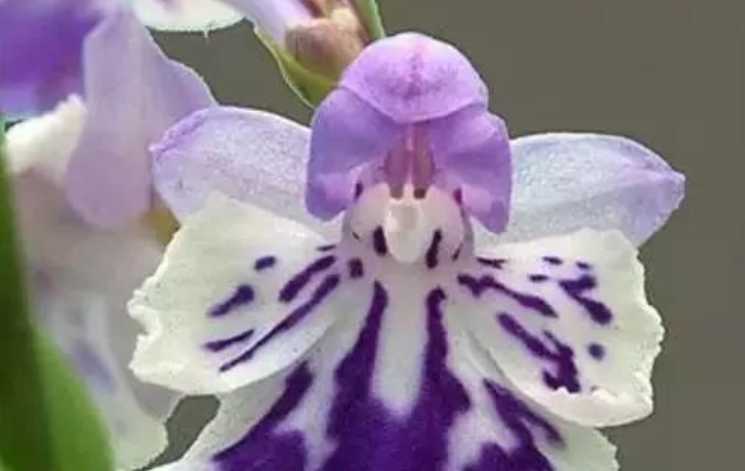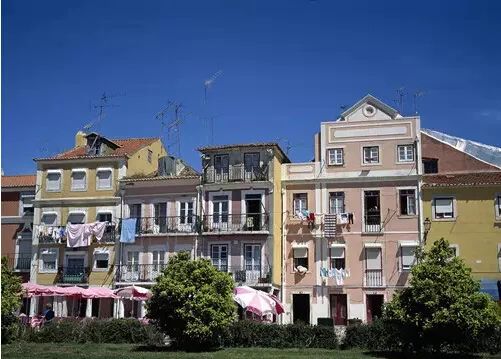The Bizarre African Hydnora: A Desert Enigma
In the arid and inhospitable deserts of southern Africa, a truly extraordinary plant lurks beneath the sandy surface, emerging only to reveal its peculiar and captivating form - the African Hydnora, or Hydnora africana. This unique plant has long intrigued botanists, nature enthusiasts, and even passers - by lucky (or perhaps unlucky) enough to encounter its strange presence.

Source: Images from the Internet, if there is any infringement, please contact the removal of
The African Hydnora is a parasitic plant, spending most of its life hidden from view. Its vegetative parts, entirely lacking in chlorophyll and leaves, resemble a fungus more than a typical plant. The plant's body consists mainly of a network of thick rhizophores - subterranean stems and roots that spread through the soil around its host plant. These fleshy, angular, and warty stems bear outgrowths similar to worms, which attach to the roots of the host, usually species of the genus Euphorbia such as E. mauritanica and E. tirucalli. It's only when the developing flowers push through the ground that the plant becomes visible.
The flowers of the African Hydnora are a sight to behold, albeit a rather unusual one. The buds develop underground and eventually emerge, reaching a height of about 100 to 150 mm. The spherical flower is brown on the outside, but its inner surface is a bright salmon to orange color. It has 3 or 4 thick, fleshy perianth lobes. Initially fused, these lobes rupture vertically as the flower matures, exposing the inner structures. The inner surface of the perianth lobes is covered in stout bristles, and the stamens are located halfway down the 10 - 20 mm wide perianth tube. What makes these flowers even more remarkable is their odor. They emit a putrid smell, similar to that of rotting meat, which is a key part of their survival strategy. This foul odor attracts carrion beetles and other insects. Once inside the flower, the insects are temporarily trapped by the bristles. As they struggle to escape, they brush against the anthers, picking up pollen, and then deposit it on the stigma as they continue to move around, thus pollinating the flower.
Despite its somewhat macabre appearance and smell, the African Hydnora has cultural and ecological significance. In some African cultures, the fruit of the plant is valued. The fruit is a sub - globose, underground berry with a thick, leathery skin. The seeds are numerous and small, embedded in a gelatinous, edible fleshy pulp that is rich in starch. Local people, as well as animals like porcupines, moles, baboons, and jackals, enjoy the fruit. In fact, the fruit is so liked by certain animals that they help in the plant's seed dispersal. After being eaten, the seeds pass through the animals' digestive systems unharmed and are deposited in new locations, allowing the African Hydnora to spread.
-------- END --------






